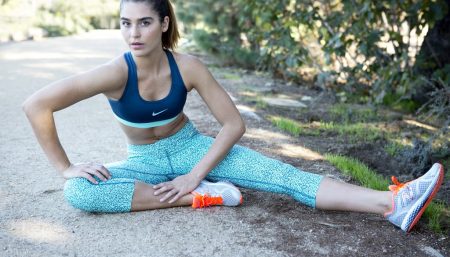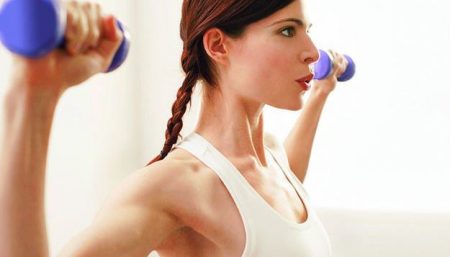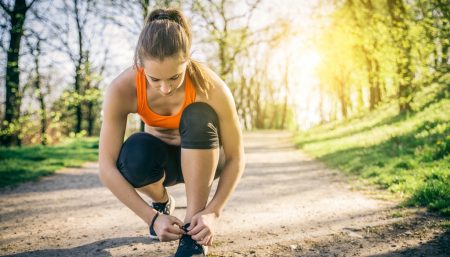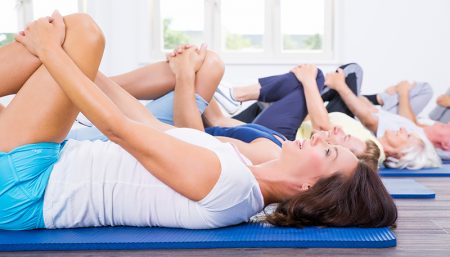Running for many is a part of cardiovascular routine. Running, of course, is not for everyone. It is a high-impact activity that is not always suitable for over-weight or older women, whose joints just can’t take the constant pounding.
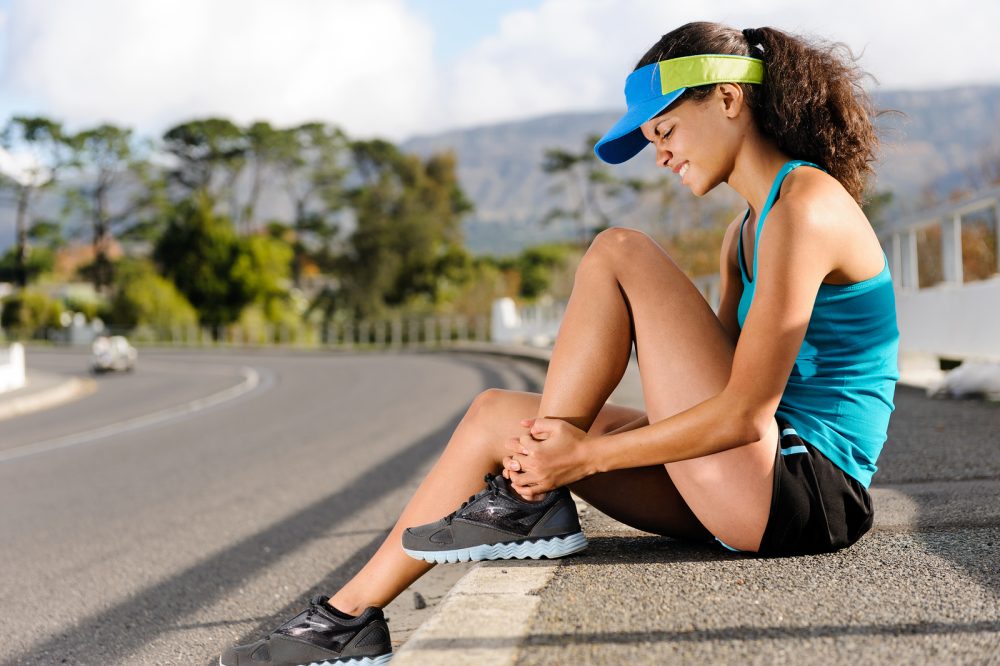
Besides running calls for regular stretching, both, dynamic and static in order to prevent injury. Stretching ‘cold’ muscles [before you run] is not a good idea. You need to warm-up when your muscles are pliable. Dynamic stretches activate and loosen up all your leg muscles, preparing you for your run. Static stretching at the end of your run can bring your heart down, cut your risk of injury and lessen muscle soreness.
The following stretches target the muscles runners use most…and not only will they help improve your running performance, but they’ll prevent the aches and pains runners commonly experience.
- Standing quad stretch: Stand with legs together. Bend your left leg, bringing your heel toward your butt, and grasp your left foot with your left hand. Press your shoelaces into your hand, so that your leg does the stretching instead of pulling up with your hand.
- Standing hip hinge. This is a good starter warm-up exercise for opening up the hip flexors. Use your hands to support your back as you stretch the muscles in your groin. For an added challenge, kneel on the floor and then bend your upper body back. You’ll feel the stretch not only in your hip flexors but also in your quads.
- Hamstrings Stretch: Lie on your back with your legs extended and your back straight. Keep your hips level and your lower back down on the floor. Bend your right knee towards your chest, keeping your left leg extended on the floor. Slowly straighten your right knee, grabbing the back of your leg with both hands. Pull your leg towards your gently while keeping both hips on the floor. Breathe deeply and hold for 10-30 seconds. Repeat on opposite side. To reduce the intensity of this stretch, bend the knee of the stretching leg.
- Piriformis Stretch: Lie on your back with your legs extended and your back straight. Keep your hips level and your lower back down on the floor. Bend your left knee, placing left foot flat on the floor. Cross your right ankle at your left knee. Grab the back of your left thigh and hug your legs towards your chest. Place your right elbow on the inner portion of your right knee and push it slightly to the side. Breathe deeply and hold for 10-30 seconds. Repeat on opposite side. To reduce the intensity of this stretch, don’t bring your legs towards your chest as much.
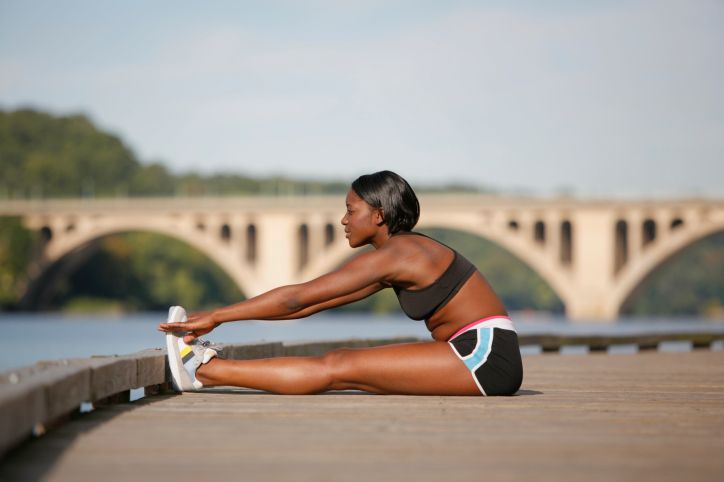
- Hamstring door stretch: Find a door frame, place one leg up against it, then engage the hamstrings by straightening the leg out. This is a great stretch, it takes pressure off the lower back, you can do it straight after your piriformis and gluteus stretches.
- Calf Stretch: Take a good step forwards and make sure your feet are both pointing forwards. Plant the heel of the rear foot into the ground and lean forwards, feeling the stretch across the back of the legs. To increase the stretch just move that front foot a bit further forwards.
- Gluteus Stretch: Cross the right leg over the left, with the right ankle resting on the left knee. Slowly lift the left foot off the floor and toward you while you apply gentle pressure to the inside of the right knee. Hold 20 to 30 seconds, and repeat on the other side.
- Wide leg groin stretch: Stand with your feet wide apart. Slowly squat down until your knees are directly over your ankles and bend to 90 degrees. Place your hands on top of your inner thighs and slowly push outward to open your hips. You will feel a stretch in the groin muscles in both legs. Hold for 20-30 seconds, relax and repeat three times.
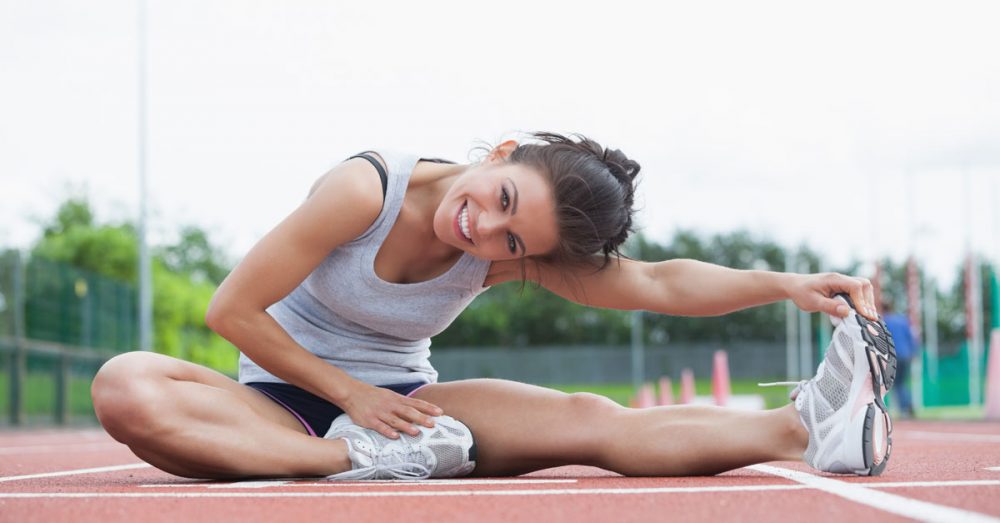
- Hip Rotation: Lie on your back with your legs extended and your back straight. Keep your hips level and your lower back down on the floor. Bend your right knee towards your chest, grabbing it with your left hand. Place your right hand out to the side. Keeping your shoulder blades square (on the mat) use your left hand to guide your right knee across your body and towards the floor on your left side. Breathe deeply and hold for 10-30 seconds. Repeat on opposite side. Don’t force your knee to the floor if your flexibility does not allow it.
Breathe deeply and hold each stretch for 15-30 seconds. Then repeat on opposite side (if required). Perform each stretch once or twice, stretching only to the edge of discomfort—between a 5 and 7 on a scale of 1-10.
Disclaimer
The Content is not intended to be a substitute for professional medical advice, diagnosis, or treatment. Always seek the advice of your physician or other qualified health provider with any questions you may have regarding a medical condition.
